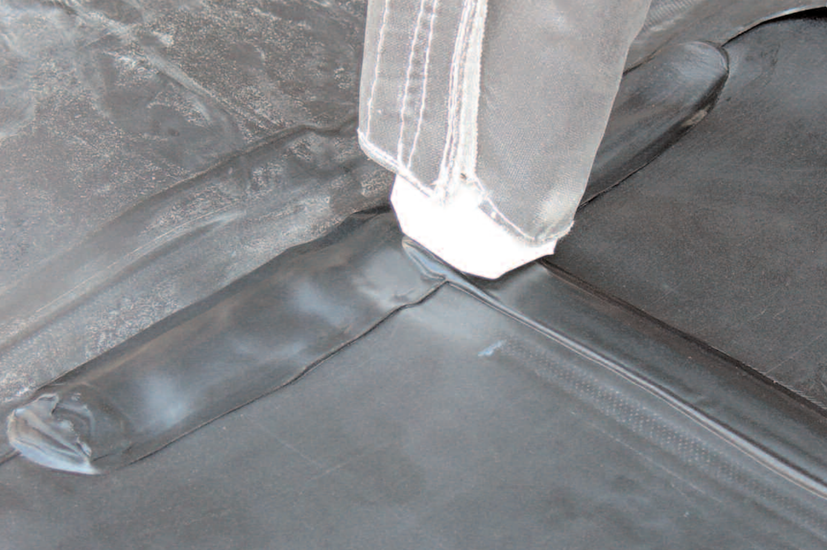
Why your choice of rod for extrusion welding matters
Extrusion welding is a highly effective seaming method that’s primarily used for detailed patching work on polymeric geomembranes such as GSE® HD and GSE LL. It also works well for seams around pipes, especially those in areas that are difficult to access with a wedge welder.
But what are the key factors you need to consider in order to ensure a best-in-class seaming outcome? Proper preparation of the geomembrane sheets, temperature, and welding speed are all important components for a successful result ─ but by far the most crucial is the compatibility of the welding rods you use.
Let’s dig a little deeper
Extrusion welding involves the melting of a strip of polymer over the edges of overlapped geomembrane sheets to form continuous and impermeable bonding. Before the weld, the sheet surfaces must be prepared immaculately in order to clean the surfaces before applying the extrudate weld. A 4 or 5 mm-diameter welding rod is commonly used to create an extrusion weld. The two geomembrane sheets to be joined should be positioned to create an overlap of at least 100 mm (although some specifications allow an overlapping of 75 mm).
Extrusion welding is a highly specialized task, requiring professional operator skills and care for both the preparation and the technique itself. Engage a highly competent and qualified operator to carry out any kind of welding activity connected to a geomembrane installation.
Cutting to the chase: the compatibility of your welding rods
In extrusion welding, the welding rod must be compatible with the geomembrane sheets to be welded. The rod should be made of the same polymer and, where possible, manufactured from the same materials as the geomembrane sheets.
Using welding rods made from different materials can lead to incompatibility issues and seaming failures. Both the geomembrane sheets and welding rods need to have comparable melt-flow index and density. In addition, the rods should have comparable durability performance ─ i.e. stress-crack resistance, thermal-oxidative stability, and/or UV stability ─ as the parent geomembrane sheets.
For these reasons, in order to ensure optimal welding results, we strongly recommend that you source your welding rods from the same manufacturer that supplied your geomembrane.
Explore more blogs
View allHow to combine engineered earth armoring with greywater treatment
Resilient water management by combining greywater recycling with engineered earth armoring for irrigation, erosion control, and increased property value.
How can geosynthetics help energy transition?
Geosynthetics accelerate agricultural outputs and improve resilience by optimizing water management through enhanced irrigation efficiency and providing structural stability to agricultural infrastructures like dams and reservoirs.
How can geosynthetics accelerate agriculture outputs and improve resilience?
Geosynthetics accelerate agricultural outputs and improve resilience by optimizing water management through enhanced irrigation efficiency and providing structural stability to agricultural infrastructures like dams and reservoirs.